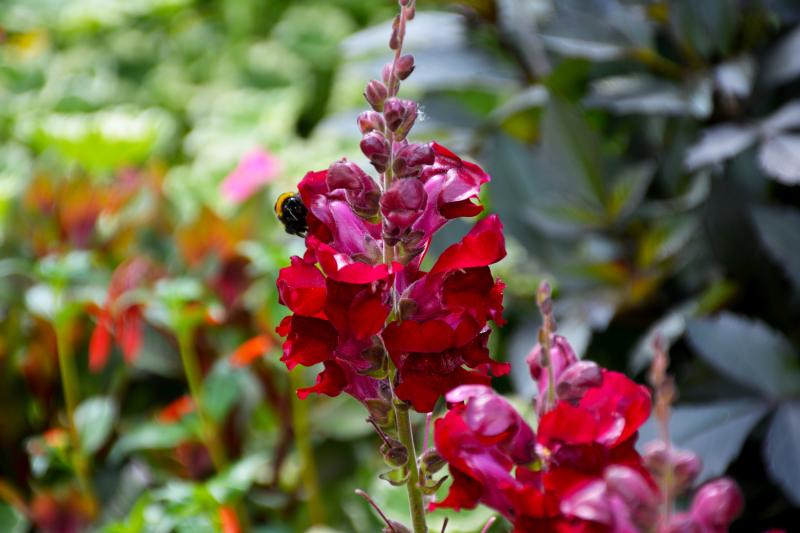Start a resistance movement in your garden
When the Nazis invaded France, many French citizens secretly fought back and formed an underground army loosely known as the Resistance. They sabotaged railroads, cut transmission wires and even stole street signs so the invading armies would get lost.
In the garden, you may need to wage your own resistance movement against diseases such as powdery mildew.
Powdery mildew often makes monarda or bee balm (Monarda didyma) unsightly. Powdery mildew is so called because it looks like a grayish-white powder on the upper surfaces of leaves. Plants that are severely infected drop their leaves prematurely. Symptoms are most severe on plants that are overcrowded or those growing in partial to full shade.
You can reduce the severity of powdery mildew by choosing a planting spot in full sun. Also, keep the plants spaced at least 2 to 2 1/2 feet apart. To prevent overcrowding, dig up and separate bee balms every few years. Cut out and destroy all disease-infested leaves and stalks in the fall. You can also try spraying with fungicides to combat powdery mildew.
Probably the easiest way to avoid powdery mildew is to plant mildew-resistant varieties. Marshall's Delight is mildew-resistant bee balm that grows 2 1/2 to 4 feet tall and blooms with bright-pink flowers. Raspberry Wine is also resistant and has wine-red flowers on 3- to 4-foot-tall plants. Henry Ross from Gardenview Park in Ohio developed a resistant bee balm called Gardenview Scarlet that blooms with bright-red flowers on 3- to 4-foot-tall plants. The flower heads of Gardenview Scarlet are a stunning 3 to 3 1/2 inches across. The deep-purple Violet Queen grows 3 to 4 feet tall and blooms from mid-July to mid-August. For shorter disease-resistant bee balm, try the new Petite Delight, the first in a series of dwarf monardas. Its lavender rose flowers bloom on 12- to 18-inch-tall plants, although it only has fair resistance to powdery mildew.
Don't forget annual flowers for resistance to powdery mildew. State Fair zinnias (Zinnia spp.) are disease resistant and famous for attracting bees, butterflies and hummingbirds to your flowerbeds. They have huge, dahlia-like flowers that measure 4 to 6 inches across. The plants fit well in the back of a border, growing up to 3 feet tall. State Fair zinnias bloom in a wide range of colors including purple, red, orange, yellow, white and pink. The double blooms have many rows of long, thin petals and a small visible center.
Golden Guardian and Doubloon marigolds are both especially resistant to powdery mildew. Tidal Wave Hot Pink petunia is also powdery mildew resistant, and almost all annual phlox (Phlox drummondii) are powdery mildew resistant.
All of the Rocket series of snapdragons are very mildew resistant and will even tolerate light frost. Snapdragon flowers are edible and make a colorful garnish for salads and desserts, and in drinks. The flavor is floral and slightly bitter, so use them sparingly.
Fight back against powdery mildew by planting resistant varieties. Thin plants to improve air circulation. And if the Nazis invade again, remove the street signs.






















































